The Origins of Mamba
The term “mamba” refers to a group of venomous snakes native to sub-Saharan Africa, characterized by their arboreal (tree-dwelling) nature and potent venom. The name “mamba” itself originates from languages of southern Africa; it is derived from the Zulu word “imamba” and the Swahili word “mamba”. These snakes belong to the genus Dendroaspis and are known for their slender bodies and agility both in trees and on the ground. The term encompasses several species, including the notorious black mamba and the green mamba, both of which are highly venomous and have garnered significant attention for their speed, agility, and the potency of their venom.
The Snake Behind the Name
The Black Mamba (Dendroaspis polylepis) is a renowned and highly venomous snake species native to sub-Saharan Africa. It is recognized for its large size, exceptional speed, and potent venom, making it one of Africa’s most feared snakes. Despite its name, the black mamba’s appearance is not black; its skin is typically a shade of grey or olive, with the “black” referring to the dark interior of its mouth. This species is often shrouded in myths and legends due to its formidable reputation, but it primarily seeks to avoid human encounters and will only attack if threatened. The black mamba’s agility, along with its highly toxic venom that can cause rapid fatality without antivenom treatment, underscores its notoriety among venomous snakes in Africa.
Cultural Significance
The symbolism and cultural significance of the mamba, particularly the black and green mambas, are multifaceted. In various cultures, snakes represent a blend of danger and mysticism, embodying both fear and reverence in human consciousness. While the Mamba people, an ancient community, showcase a deep historical significance tied to their name, highlighting the cultural depth and diversity associated with the term “Mamba”. In African cultures, snakes like the green mamba symbolize balance, renewal, and transformation, indicating the creature’s role in depicting life’s cyclical nature and the harmony between different life aspects. Moreover, the name “Black Mambas” has been adopted by a female anti-poaching unit in Africa, underlining a powerful narrative of protection, community involvement, and resistance against poaching, further enriching the cultural dimensions of the mamba. Lastly, “Mamba Mentality,” popularized by the late basketball player Kobe Bryant, captures a philosophy of determination, hard work, and resilience, demonstrating the wide-ranging cultural impact of the term beyond its biological origins.
Mamba in Sports
The Legend of Kobe Bryant
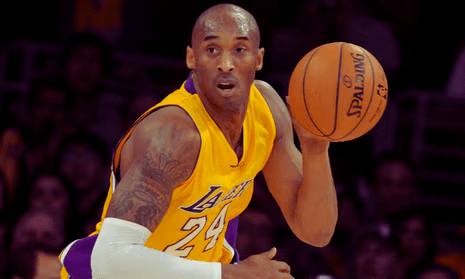
Kobe Bryant, an iconic figure in basketball and beyond, left an indelible mark through his “Mamba Mentality.” This ethos encapsulates more than just his impressive on-court achievements; it signifies a relentless pursuit of excellence and a profound commitment to personal and professional growth. Kobe’s career was storied, characterized by numerous accolades, records, and moments that solidified his status as one of the greatest to ever play the game. Yet, it was his approach to his craft and life that distinguished him. The Mamba Mentality is about focusing on the process, dedicating oneself entirely to one’s goals, and constantly striving for improvement. Bryant believed in training the mind as rigorously as the body, emphasizing the importance of mental strength and resilience. His life and legacy continue to inspire not only athletes but individuals across various fields, teaching lessons of dedication, vision expansion, and the significance of hard work and perseverance.
Mamba Mentality
The “Mamba Mentality” is a phrase coined by the late basketball legend Kobe Bryant, representing a philosophy of relentless pursuit of excellence, not just in basketball but in every aspect of life. It embodies the ideals of hard work, resilience, and a fearless approach to challenges. This mentality suggests that hard work consistently outweighs talent and emphasizes the importance of early morning workouts, doing more than others, and having faith in the work you’ve done. It is about using setbacks as motivation, breaking down tasks into manageable steps, and facing fears head-on. Essentially, the Mamba Mentality is about striving for continuous improvement and embracing challenges as opportunities for growth.
Impact on Fans and Players
Kobe Bryant’s “Mamba Mentality” has significantly impacted fans and players worldwide, influencing them beyond the boundaries of basketball. This philosophy encapsulates more than just athletic prowess; it’s about an all-consuming dedication to excellence and a relentless work ethic. Fans and players alike are inspired by Bryant’s commitment to his craft, his ferocious competitiveness, and the poetic nature of his play. His mentality has left a lasting legacy, driving individuals to pursue greatness in their endeavors with the same fervor Kobe showed on the basketball court.
Kobe’s influence extends to personal growth and achievement, encouraging a focus on honing skills and leveraging one’s passion as the driving force behind success. His approach to life and basketball has resonated deeply, making him a favorite among fans and a model for players around the globe.
Mamba in Pop Culture
Movies and TV Shows
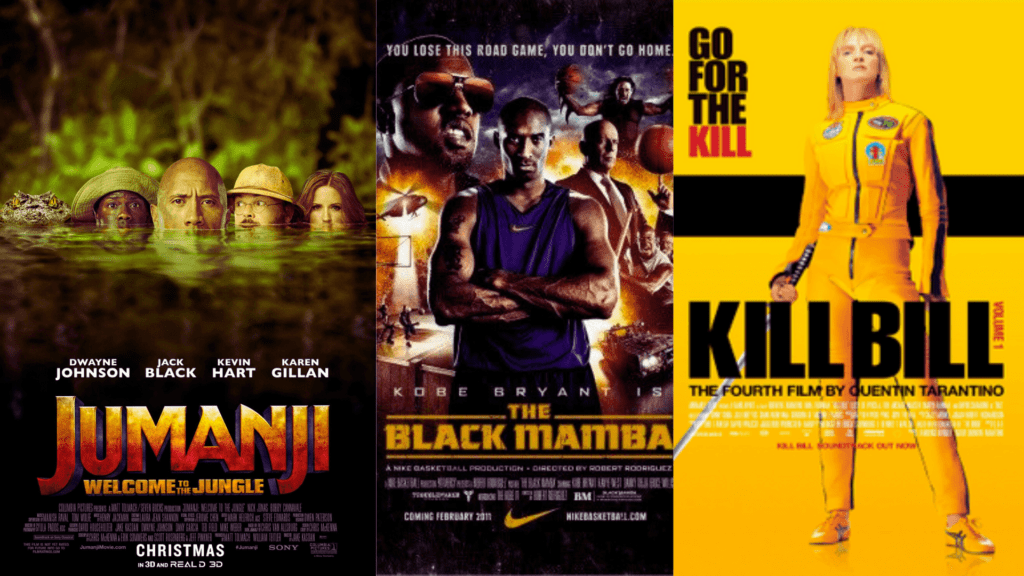
The “Black Mamba” moniker and theme have found their way into various movies and TV shows, reflecting its versatile appeal. Here are a few notable instances:
- “Jumanji: Welcome to the Jungle” (2017) and “Kill Bill: Vol. 2” (2004) are among the most popular movies tagged with the keyword “black-mamba”, showcasing the theme’s broad reach in action and adventure genres.
- Robert Rodriguez’s Nike Short Film ‘The Black Mamba’ is a notable project that teamed up the director with Kobe Bryant, Bruce Willis, and Danny Trejo, innovatively blending sports and cinema.
- The Bride (Kill Bill) – Beatrix “the Bride” Kiddo, codenamed Black Mamba, is the protagonist in the martial arts film series “Kill Bill”, underlining the theme’s influence in shaping powerful and complex characters.
These examples illustrate the broad and impactful use of the “Black Mamba” theme across various pop culture mediums, highlighting its enduring legacy and appeal.
Music and Lyrics
Mamba mentality, a philosophy coined by Kobe Bryant, emphasizes hard work, determination, and the relentless pursuit of excellence. It’s not just a sports ethic but has also permeated music and culture. Musicians and lyricists often draw inspiration from this mindset, reflecting its principles in their work and lives. Songs like “Mamba Mentality” by Jevon Alexander explore the theme directly, embodying the spirit of dedication and resilience that Kobe represented. Additionally, Kobe’s impact on hip-hop culture and its artists is profound, with many viewing him as an embodiment of the relentless drive and passion that the genre itself espouses. Mamba mentality transcends basketball, inspiring individuals to strive for greatness in all areas, including music, where the process and hard work are celebrated and revered.
The Mamba Species
Black Mamba

The black mamba (Dendroaspis polylepis) is one of the most feared and respected snakes in the world, known for its speed, aggression, and potent venom. It is native to parts of sub-Saharan Africa and prefers habitats such as savannas, rocky hills, and forests. Despite its name, the black mamba’s skin color ranges from gray to dark brown, but its mouth’s interior is distinctly black, which is visible when it threatens to open its mouth wide. It is one of the fastest snakes, capable of moving up to 12.5 miles per hour (20 kilometers per hour). The black mamba’s venom is highly toxic and fast-acting, containing neurotoxins that can cause symptoms within ten minutes and, if untreated, can lead to death due to respiratory failure. However, it is worth noting that black mambas typically attack humans only when threatened or cornered. Conservation efforts and education about their behavior are crucial for coexistence.
Green Mamba
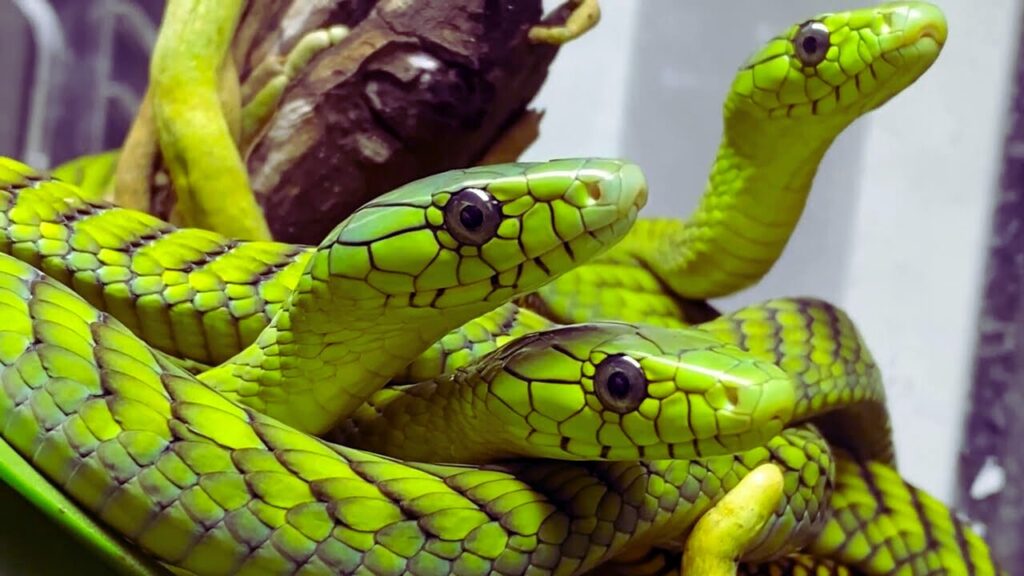
The Eastern Green Mamba (Dendroaspis angusticeps) is a highly venomous snake known for its striking green color and slender body. It can reach lengths of up to 2.5 meters (8 ft 2 in). This species is native to the coastal regions of southern East Africa. Unlike its more infamous relative, the Black Mamba, the Eastern Green Mamba primarily inhabits trees in dense forests, making it less likely to come into contact with humans. However, when threatened, it can deliver a potent venom that affects the nervous system, potentially leading to respiratory failure and death if not treated promptly. The diet of the Eastern Green Mamba mainly consists of birds and small mammals, which it hunts during the day. Despite its dangerous reputation, encounters with humans are rare due to the snake’s arboreal lifestyle and preference for remaining in undisturbed habitats.
Mamba in the Animal Kingdom
Characteristics and Habitat
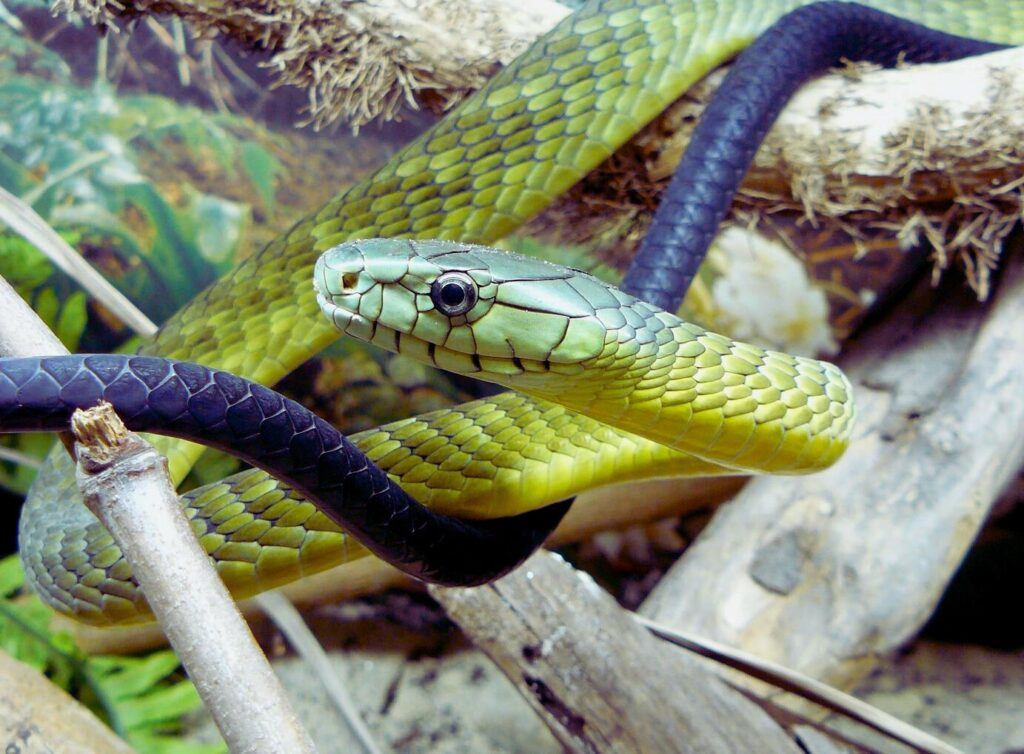
Mambas are highly venomous snakes belonging to the genus Dendroaspis, with the Black Mamba (Dendroaspis polylepis) being the most famous. They are known for their speed, agility, and potent venom.
The Black Mamba is found in sub-Saharan Africa, inhabiting rocky savannas and lowland forests. Unlike other mamba species that may be more arboreal (tree-living), the Black Mamba is primarily terrestrial, though it can climb trees and is often found in both ground-level and elevated habitats. It varies in color from grey to dark brown, not black, with the name “black” referring to the color of the inside of its mouth.
The Black Mamba’s diet includes birds and small mammals, which it hunts using its incredible speed and the element of surprise. When threatened, it is capable of striking with high precision and delivering a lethal dose of neurotoxic venom, which can be fatal to humans without prompt and appropriate antivenom treatment.
Conservation Status
The conservation status of mamba species varies but generally does not currently signal immediate concern. The Black Mamba, for instance, is classified as Least Concern (LC) on the IUCN Red List, indicating that its population numbers are stable. Despite this relatively secure status, there are warnings about future threats due to human expansion, which could impact their habitats and, consequently, their populations.
The Western Green Mamba’s conservation status is not explicitly listed as endangered, but its habitat and population are noted to be highly fragmented, hinting at potential concerns if such trends continue.
As for the broader category of mamba snakes (Dendroaspis spp.), they are generally listed as Least Concern, though specific regional assessments may vary, as in the case of South Africa for the Green Mamba.
In conclusion, while mambas are not currently endangered, ongoing monitoring and conservation efforts are vital to ensure these species remain stable amidst human expansion and habitat changes.
Conclusion
From the plains of Africa to the hardwood of basketball courts and beyond, “mamba” embodies qualities of speed, precision, danger, and excellence. Its multifaceted significance is a testament to the power of naming and symbolism in human culture.
Read also: What is Juju Watkins Real Name?
FAQs
Q. Is the black mamba the most venomous snake in the world?
While extremely venomous, the black mamba is not the most venomous. That title often goes to snakes like the inland taipan.
Q. How did Kobe Bryant come to be known as the Black Mamba?
Kobe Bryant adopted the “Black Mamba” nickname to represent his basketball skills, inspired by the snake’s reputation for speed and lethality.
Q. Can mambas be found outside of Africa?
Mambas are native to sub-Saharan Africa and are not naturally found in other continents.
Q. What does “Mamba Mentality” mean?
“Mamba Mentality” is a philosophy of hard work, resilience, and relentless pursuit of one’s goals, coined by Kobe Bryant.
Q. Are green mambas as dangerous as black mambas?
While green mambas are venomous, their venom is not as potent as that of the black mamba, making them less dangerous to humans.
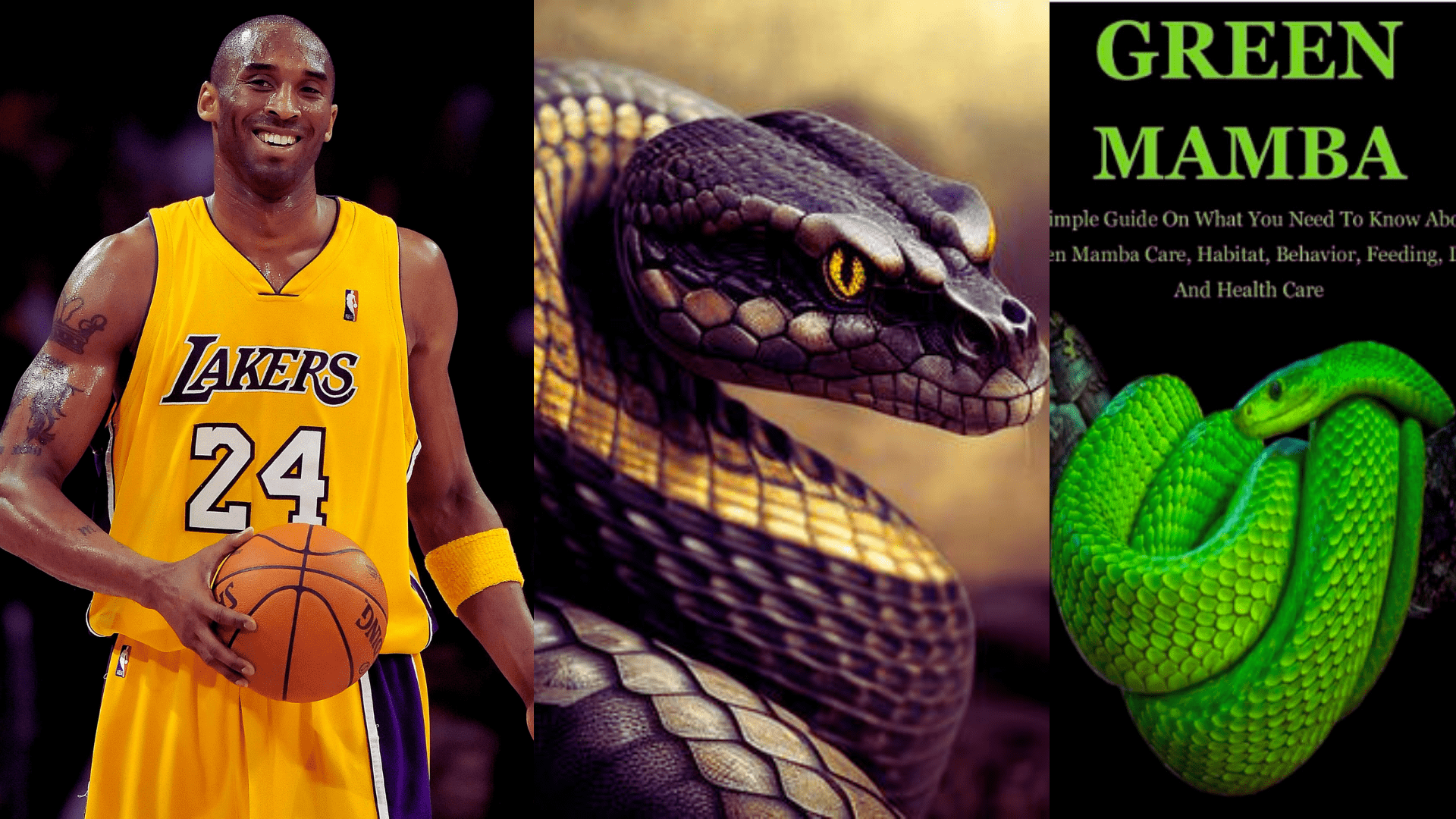




I sincerely admired what you’ve produced here. The sketch is elegant, your written content chic, yet you appear to have developed some anxiety regarding what you aim to offer thereafter. Certainly, I shall return more frequently, just as I have been doing almost constantly, should you uphold this incline.
thanks
I genuinely appreciated what you’ve achieved here. The outline is tasteful, your written content fashionable, yet you appear to have acquired some uneasiness regarding what you wish to present forthwith. Undoubtedly, I’ll return more frequently, similar to I have almost constantly, should you sustain this upswing.